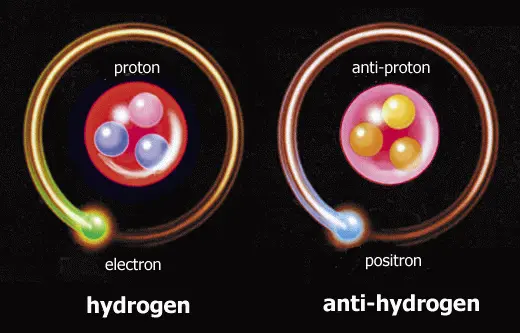
In 2016, physicists were amazed when they detected antimatter versions of helium nuclei in an experiment aboard the International Space Station (ISS). But what really got them scratching their heads was the quantity of these antimatter particles. The numbers were much greater than the Standard Model of particle physics predicts.
In a new study, an international team of physicists has proposed hypothetical objects called fireballs to explain these striking observations.
The Mystery of Antihelium
Antimatter, the counterpart to matter, annihilates upon contact with matter. Every particle in the Universe has its corresponding antiparticle. For instance, the electron’s antiparticle is the antielectron, known as a positron. The electron and the antielectron have the same masses but opposite electric charges

Antimatter is closer to us than most people think. Small amounts of antimatter — at a rate ranging from less than one particle per square meter to more than 100 per square meter — constantly rain down on the Earth in the form of cosmic rays, energetic particles from space. Antimatter can be found closer still. The average banana (rich in potassium) produces a positron roughly once every 75 minutes. That’s because potassium-40 will occasionally eject a positron during the process of radioactive decay.
Theoretically, according to the Standard Model — the prevailing theory that describes subatomic particles — half the universe’s matter should have been antimatter. This implies that the universe should have destroyed itself soon after the Big Bang. However, antimatter remains elusive and scarce in the universe. This discrepancy is believed to have something to do with dark matter and dark energy.
Approximately eight years ago, the Alpha Magnetic Spectrometer (AMS-02) on the ISS detected around 10 antihelium nuclei. Creating antihelium-4, requires a specific and rare set of conditions involving multiple antiprotons and antineutrons. One antihelium-4 would be produced for every 10,000 antihelium-3, the current theory says. However, what the experiment actually measured was one antihelium-4 for every two to three antihelium-3 events — much beyond what the Standard Model predicts, so the data can’t be tossed away as a random statistical fluke.
Antihelium fireballs
The new study explores the possibility of these antihelium particles originating from so-called “fireballs.” These hypothetical objects could result from currently unobserved phenomena like the collision of dense clumps of dark matter. Dark matter is a mysterious substance that constitutes about 80% of the universe’s matter but does not interact with light.
According to Live Science, fireballs are described as dense, energetic regions of space filled with antiparticles. As these fireballs expand at nearly the speed of light, they release antiprotons, antineutrons, and antihelium into the surrounding environment. This hypothesis aligns well with the preliminary results detected aboard the ISS.
While these findings are promising, they remain preliminary and would require experimental validation. The AMS-02 is expected to complete its analysis of the candidate antihelium events, which may provide more clarity.
Additionally, the General AntiParticle Spectrometer (GAPS) project, set to launch a balloon over Antarctica to detect antimatter cosmic rays, including antihelium nuclei, could also clear things up.
As scientists continue to explore these findings, the potential for discovering unknown physics becomes increasingly intriguing.
The findings appeared in the journal Physical Review D.









